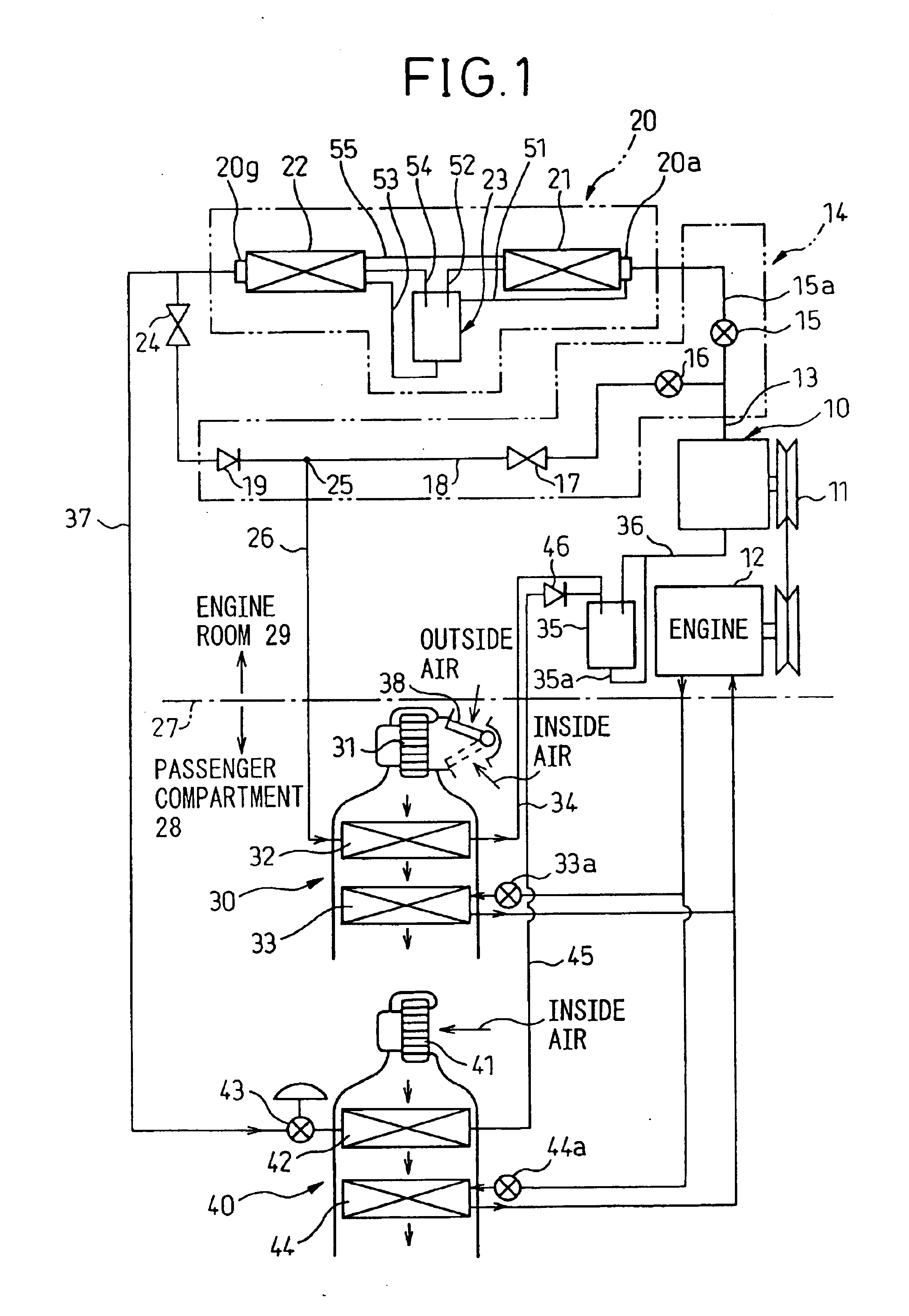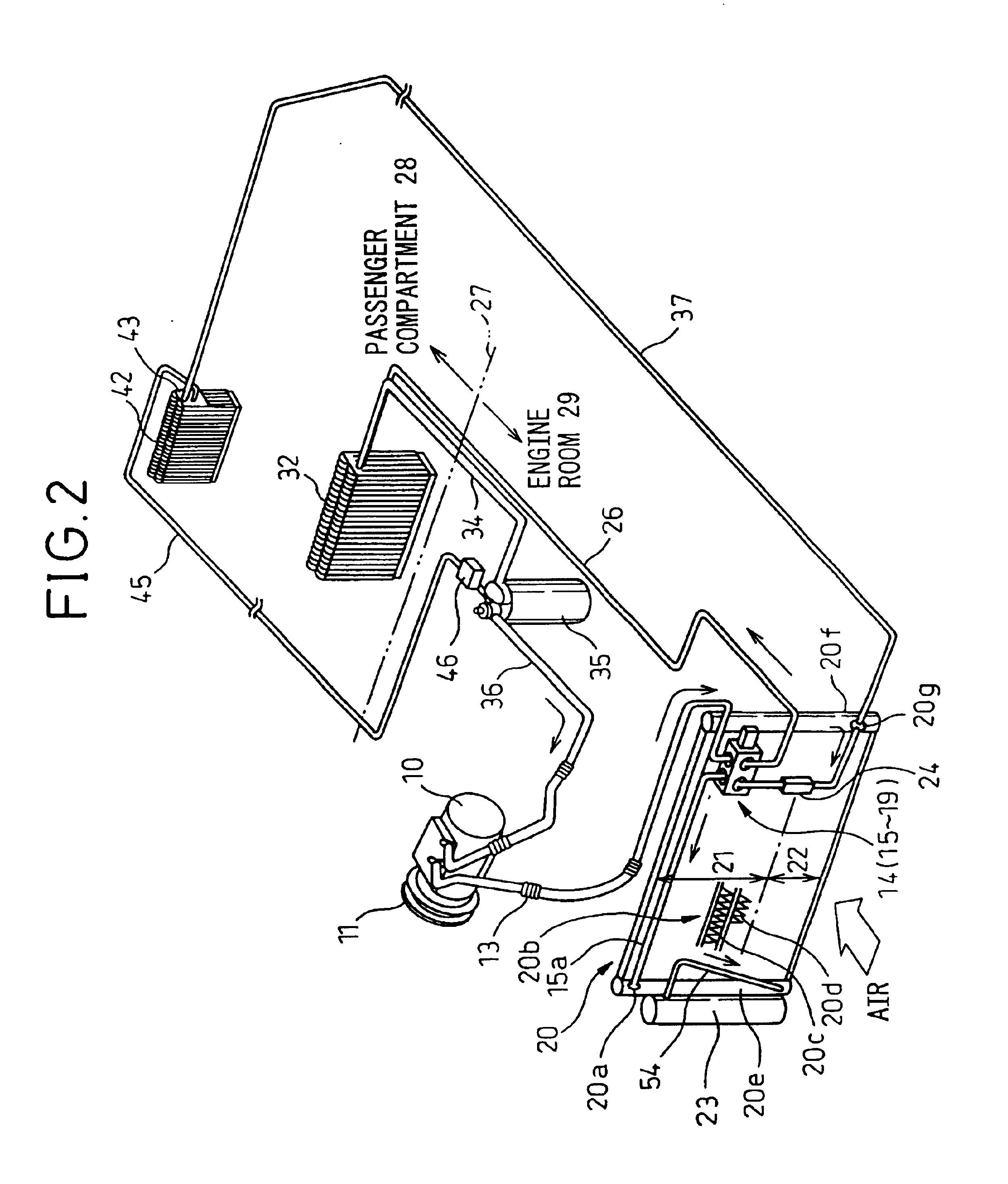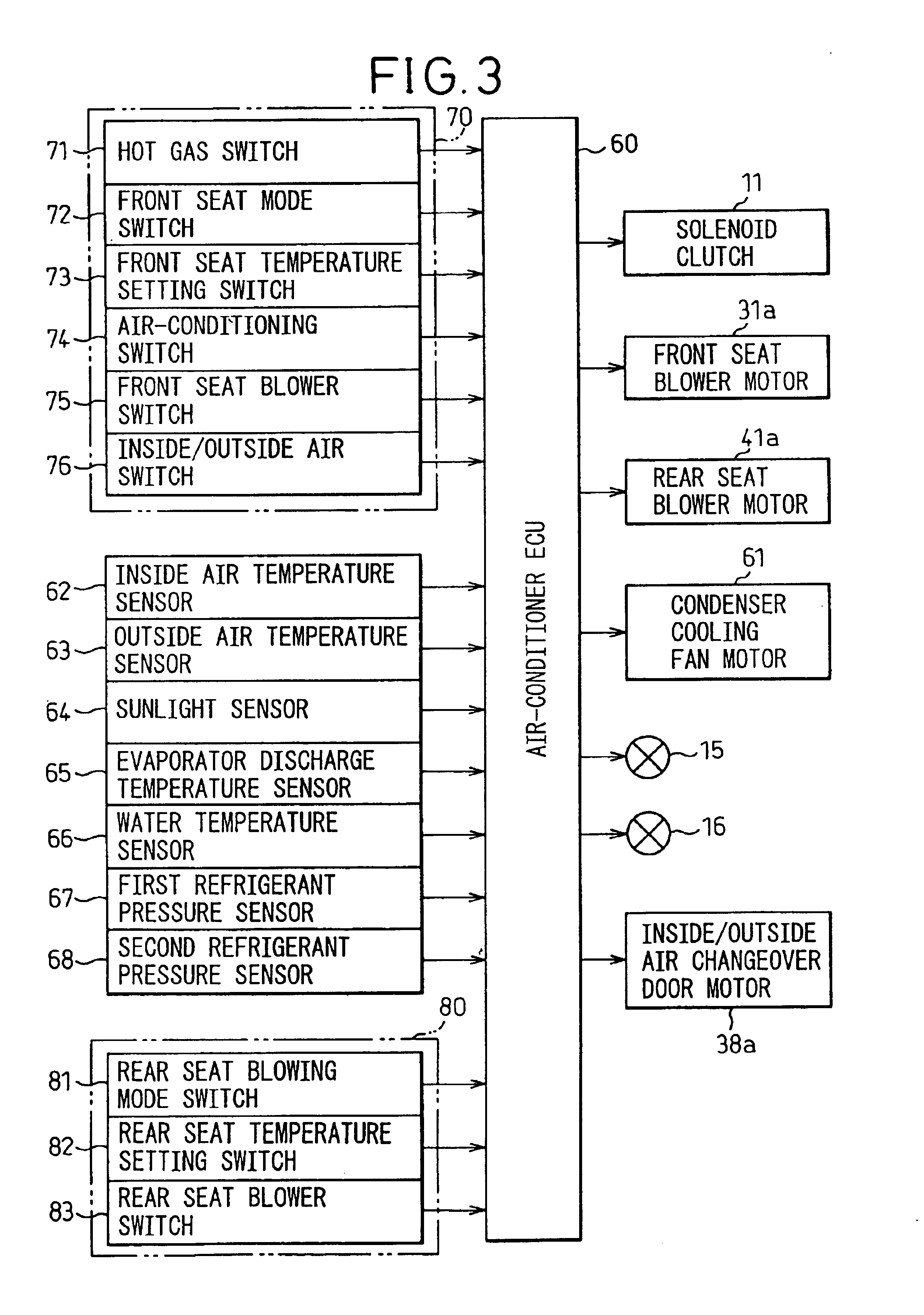Vehicle air-conditioning system
a technology for air conditioning systems and vehicles, applied in the direction of machine operation, lighting and heating apparatus, transportation and packaging, etc., can solve the problems of insufficient amount of circulating refrigerant of hot gas heater cycles, extremely small high/low differential pressure of cycles, and small amount of circulating refrigeran
- Summary
- Abstract
- Description
- Claims
- Application Information
AI Technical Summary
Benefits of technology
Problems solved by technology
Method used
Image
Examples
first embodiment
[0043]FIG. 1 illustrates the circuit configuration of the refrigeration cycle and the hot water circuit configuration of the vehicle air-conditioning system according to a first embodiment, while FIG. 2 illustrates the layout of the refrigeration cycle parts of the vehicle air-conditioning system according to the first embodiment mounted in a vehicle.
[0044]The first embodiment relates to a vehicle air-conditioning system of a dual air-conditioner system provided with both a front seat air-conditioning unit 30 for air-conditioning a front seat area of a passenger compartment 28 and a rear seat air-conditioning unit 40 for air-conditioning a rear seat area of the passenger compartment 28. The air-conditioning system is applied for example to a one-box type recreational vehicle or another vehicle having a large compartment space.
[0045]Note that the front seat air-conditioning unit 30 is mounted at the inside of an instrument panel (not shown) arranged at the front of the passenger comp...
second embodiment
[0111]In the first embodiment, at step S60 of FIG. 4, it was judged if the inside air temperature was higher than the refrigerant temperature of the rear seat evaporator 42. In the second embodiment, as shown in FIG. 6, at step S60, it is judged if at least the predetermined time t2 has elapsed after startup of the heating mode by the hot gas heater.
[0112]That is, as shown in FIG. 5, when at least the predetermined time t2 has elapsed after startup of the heating mode, the temperature of the suction air (inside air) of the rear seat evaporator 42 becomes higher than the refrigerant temperature of the rear seat evaporator 42 and the refrigerant of the rear seat evaporator 42 can absorb heat from the suction air (inside air). Therefore, as shown in FIG. 6, at step S60, it is judged if at least the predetermined time t2 has elapsed from the startup of the heating mode. If at least the predetermined time t2 has elapsed, the routine proceeds to step S70, whereby it is sufficient to opera...
third embodiment
[0113]In the first and second embodiments, the explanation was given of the example of operating the front seat blower 31 of the front seat air-conditioning unit 30 and setting the rear seat blower 41 of the rear seat air-conditioning unit 40 to the off state in the refrigerant recovery operation by the cooling mode at steps S30 of FIG. 4 and FIG. 6. In the third embodiment, as shown in FIG. 7, the refrigeration cycle is set to the state of the refrigerant recovery operation due to the cooling mode (state with cooling use solenoid valve 15 on and heating use solenoid valve 16 off) at step S30 as shown in FIG. 7, then the routine proceeds to step S35, where the front seat blower 31 is operated to blow outside air to the front seat evaporator 32. On the other hand, at the rear seat air-conditioning unit 40, the rear seat blower 41 is operated to blow inside air to the rear seat evaporator 42.
[0114]Due to this, a differential pressure of the [refrigerant pressure of rear seat evaporato...
PUM
 Login to View More
Login to View More Abstract
Description
Claims
Application Information
 Login to View More
Login to View More - R&D
- Intellectual Property
- Life Sciences
- Materials
- Tech Scout
- Unparalleled Data Quality
- Higher Quality Content
- 60% Fewer Hallucinations
Browse by: Latest US Patents, China's latest patents, Technical Efficacy Thesaurus, Application Domain, Technology Topic, Popular Technical Reports.
© 2025 PatSnap. All rights reserved.Legal|Privacy policy|Modern Slavery Act Transparency Statement|Sitemap|About US| Contact US: help@patsnap.com



